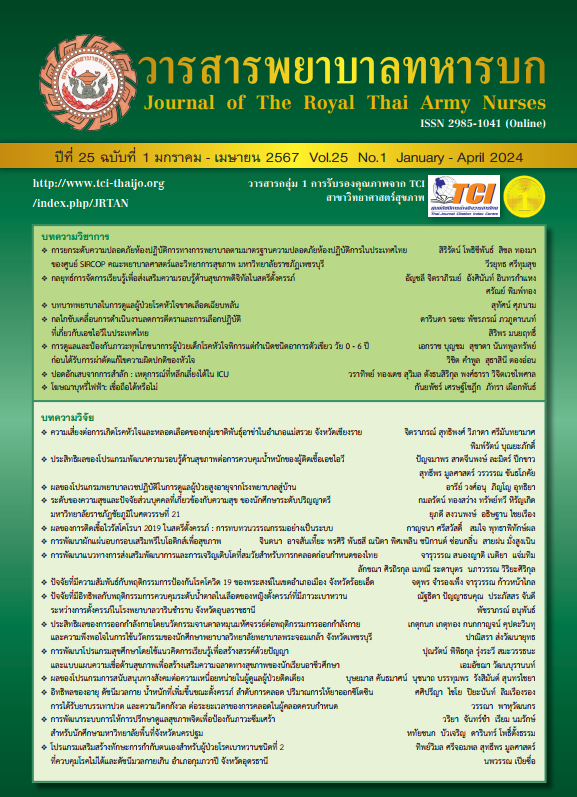Electronic cigarette advertisements: Are they trustable?
Keywords:
Electronic cigarette, Advertisement, Marketing, Tobacco industryAbstract
The prevalence of e-cigarette use or vaping among youths has constantly increased worldwide which has been proven to be associated with massive marketing and advertising campaigns from the tobacco industry. This article aimed to present key facts that the public should be aware of e-cigarette use and the marketing tactics which have been used to advertise e-cigarettes by the tobacco industry. The tobacco industry has quickly and continuously innovated and developed e-cigarette devices and related products to produce highly addictive and world widely utilizable tobacco products to facilitate and motivate vapers’ use. The tobacco industry has used different communication channels to attract the attention of youths such as social media, print, TV, and radio to deliver messages about its products by using a variety of advertising tactics such as the myriad of flavors that specifically appeal to youths, the appearance of vibrant colors of the e-cigarette devices, a portrayal of e-cigarette used by social media influencers or celebrities, etc. The tobacco industry has continuously conveyed significant misrepresentation of information to the public to attract and persuade youths to try and use e-cigarettes and related products in both direct and indirect ways without concern of its substantial effects on health, contrasting with the facts, e-cigarette use has confirmed from numerous studies regarding the potential for various short- and long-term health effects as well as nicotine addiction. Therefore, healthcare providers and policymakers should seriously control the marketing and advertising of distorting information about e-cigarettes and related products by the tobacco industry.
Downloads
References
World Health Organization. New WHO campaign highlights tobacco industry tactics to influence public health policies. Geneva: 2024.
Overbeek DL, Kass AP, Chiel LE, Boyer EW, Casey AMH. A review of toxic effects of electronic cigarettes/vaping in adolescents and young adults. Critical Reviews in Toxicology. 2020; 50(6): 531-8.
Sun T, Vu G, Lim CCW, Johnson B, Stjepanović D, Leung J, Connor JP, Gartner C, Hall WD, Chan GCK. Longitudinal association between exposure to e-cigarette advertising and youth e-cigarette use in the United States. Addictive behaviors. 2023; 146: 107810.
Baldassarri SR. Electronic cigarettes: Past, present, and future: What clinicians need to know. Clinics in Chest Medicine. 2020;41(4):797-807. doi: 10.1016/j.ccm.2020.08.018.
Jenssen BP, Wilson KM. What is new in electroniccigarettes research? Current Opinion in Pediatrics. 2019; 31(2): 262-6.
Fadus MC, Smith TT, Squeglia LM. The rise of e-cigarettes, pod mod devices, and JUUL among youth: Factors influencing use, health implications, and downstream effects. Drug and Alcohol Dependence. 2019; 201: 85-93.
Walley SC, Wilson KM, Winickoff JP, Groner J. A public health crisis: Electronic cigarettes, vape, and JUUL. Pediatrics. 2019; 143(6):e20182741.
Bhave SY, Chadi N. E-cigarettes and vaping: A global risk for adolescents. Indian pediatrics. 2021; 58(4): 315-9.
Ali FRM, Dave DM, Colman GJ, Wang X, Saffer H, Marynak KL, Dench D, Grossman M. Association of e-cigarette advertising with e-cigarette and cigarette use among US adults. Addiction. 2021; 116(5):1212-23.
Pokhrel P, Kawamoto CT, Pagano I, Herzog TA. Trajectories of e-cigarette advertising exposure, e-cigarette use and cigarette smoking in a sample of young adults from Hawaii. Addiction. 2022; 117(7): 2015-26.
Wang Y, Duan Z, Weaver SR, Self-Brown SR, Ashley DL, Emery SL, Huang J. Association of e-cigarette advertising, parental Influence, and peer Influence with US adolescent e-cigarette use. JAMA Network Open. 2022; 5(9): e2233938.
Ozga JE, Stroup AM, Abadi MH, Cheney MK, Majmundar A, Garrison KA, Chen-Sankey J, Shamblen S, Dunlap C, Stanton CA. E-cigarette marketing expenditures in the United States from 2016 to 2021: Targeted media outlets geared toward people who are at increased risk for tobacco use. Nicotine & tobacco research: official journal of the Society for Research on Nicotine and Tobacco. 2023; 25(3): 581-5.
Lyu JC, Huang P, Jiang N, Ling PM. A systematic review of e-cigarette marketing communication: Messages, communication channels, and strategies. International Journal of Environmental Research and Public Health. 2022; 19(15): 9263.
Ezike NC, Ames Boykin A, Dobbs PD, Mai H, Primack BA. Exploring factors that predict marketing of e-cigarette products on Twitter: Infodemiology approach using time series. JMIR Infodemiology. 2022; 2(2): e37412.
Smith MJ, Hilton S. Youth’s exposure to and engagement with e-cigarette marketing on social media: a UK focus group study. BMJ Open. 2023;13(8): e071270.
Jaroenjitkul C, Prasertsong C. E-cigarette: Silent dangers to youth. Journal of The Royal Thai Army Nurses. 2015; 15(3): 149-54. (in Thai)
Downloads
Published
How to Cite
Issue
Section
License
Copyright (c) 2024 Journal of The Royal Thai Army Nurses

This work is licensed under a Creative Commons Attribution-NonCommercial-NoDerivatives 4.0 International License.
บทความหรือข้อคิดเห็นใดใดที่ปรากฏในวารสารพยาบาลทหารบกเป็นวรรณกรรมของผู้เขียน ซึ่งบรรณาธิการหรือสมาคมพยาบาลทหารบก ไม่จำเป็นต้องเห็นด้วย
บทความที่ได้รับการตีพิมพ์เป็นลิขสิทธิ์ของวารสารพยาบาลทหารบก
The ideas and opinions expressed in the Journal of The Royal Thai Army Nurses are those of the authors and not necessarily those
of the editor or Royal Thai Army Nurses Association.





